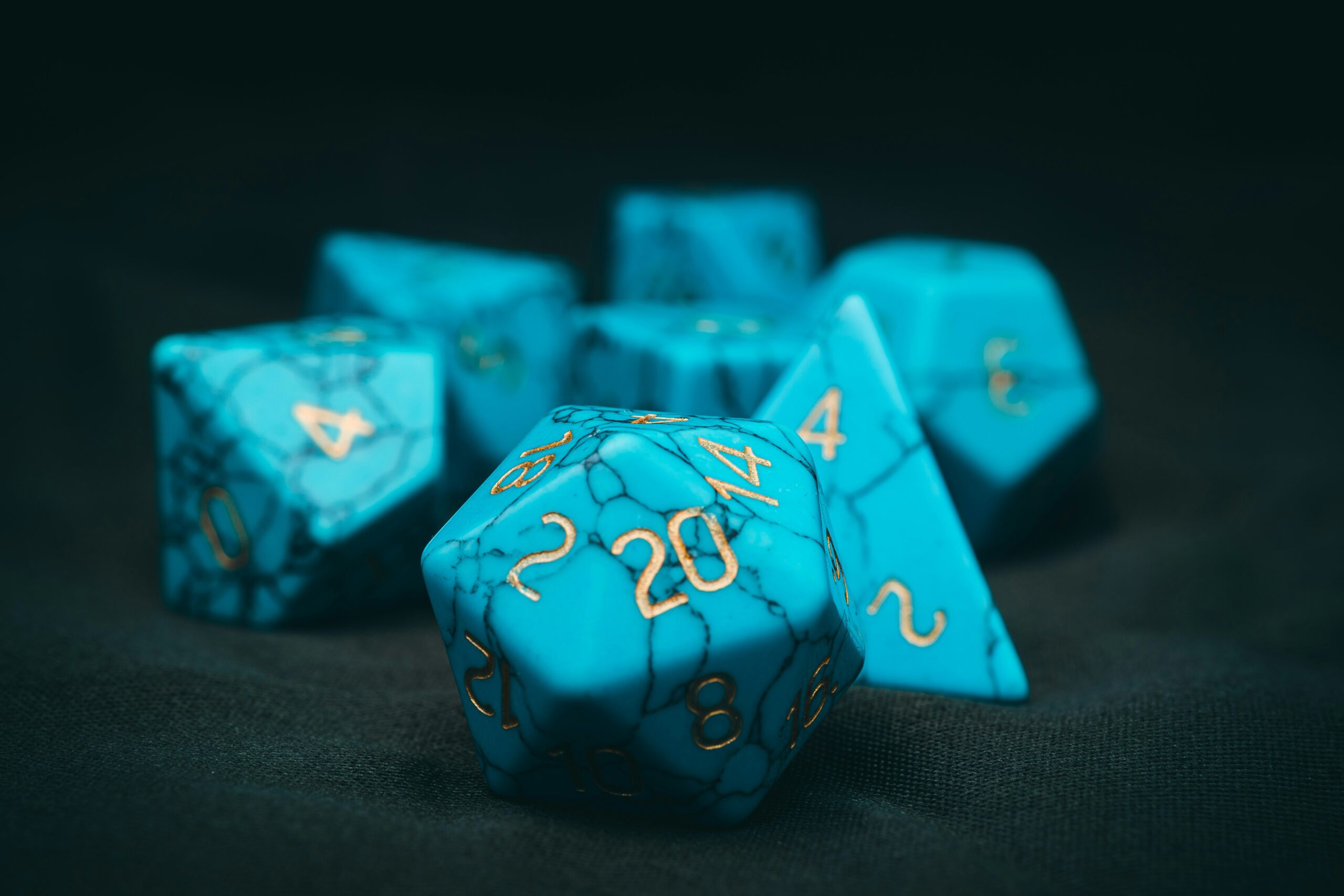In Christmas of 1979, my dad bought me Dungeons & Dragons. This was the Holmes edition, first published in 1977, covering levels 1 through 3. It was a dramatic simplification of Original D&D, intended specifically for use by those as young as junior high school. Amusingly, it was still surprisingly complicated.
One of the breakthrough innovations of OD&D was the wide range of types of dice, and the mechanics seemed design to center and celebrate using all those different types of dice:
- For instance, when creating a character, you’d roll a d4 (magic user, thief), d6 (cleric, elf, wizard), or d8 (fighter, dwarf) to determine how many hit points the character started with.
- Damage received in combat involved rolling dice depending on the type of monster that had struck you: d4 (e.g., kobold), d6 (e.g., orc), d8 (e.g., owlbear), d10 (e.g., ogre).
- The d12 wasn’t used too often, outside a treasure table and determining how many days (2d6) it would take to become a lycanthrope after being wounded by one.
- Combat involved rolling high on a d20 and looking up the results on a table.
- Percentage dice (d100 or two different colored d10s) were used to determine if the thief was successful and on some random treasure tables.
Character creation was a minigame, rolling 3d6 seven times (for each attribute and for the amount of gold, times 10, you started with) and then rolling your starting hp. This minigame got you involved quickly, even if you weren’t able to play a session yet – and, spoilers, you weren’t, because you needed to find friends who would play.
Resolution rolls had no rhyme nor reason to them. Sometimes you rolled high, sometimes low, sometimes you needed a lookup table. Besides rolling high on a d20 for combat as mentioned above, to open doors required rolling low on a d6, to turn undead required rolling high on 2d6, and to learn spells or do thievery required rolling low on percentile dice, except for one of the six thievery skills, which required a d6!
Also note that d4, 3d6, d8, 2d12, etc. uses the modern notation. Holmes wrote out the ranges instead: e.g., 1-4, 3-18, 1-8, 2-24, from which you inferred the intended number and size of the dice!
Holmes Basic also tended to overwhelm with details that were rarely used (e.g., a saving throw against dragon breath). For me, that was part of the charm – the game hinted at so much more beyond its pages! It was clearly framed as part of a larger game and larger universe.
When I was planning a one-shot of the Tower of Zenopus (the retronym for the sample dungeon in the book), I decided to create a streamlined hack of Holmes Basic, which I called BLUELITE. I refactored most of the rolls to use a d20; probabilities of success approximate the original: for instance, a 2-in-6 chance to force open a door is now a 14 or higher on a d20.
I first published BLUELITE in November, 2019. After getting great feedback from the OSR subreddit, I revised it appropriately and expanded it with a monster list. I recently updated it again. The big changes were to add a character sheet created by Daniel Walthall and – coming full circle – a sample dungeon, so that it truly could stand on its own. I also fixed the language around throwing and igniting oil and lightly copy edited the whole thing.


It still uses all the dice! Well, all but the d100. You can check it out here!
Photo by Timothy Dykes on Unsplash.
